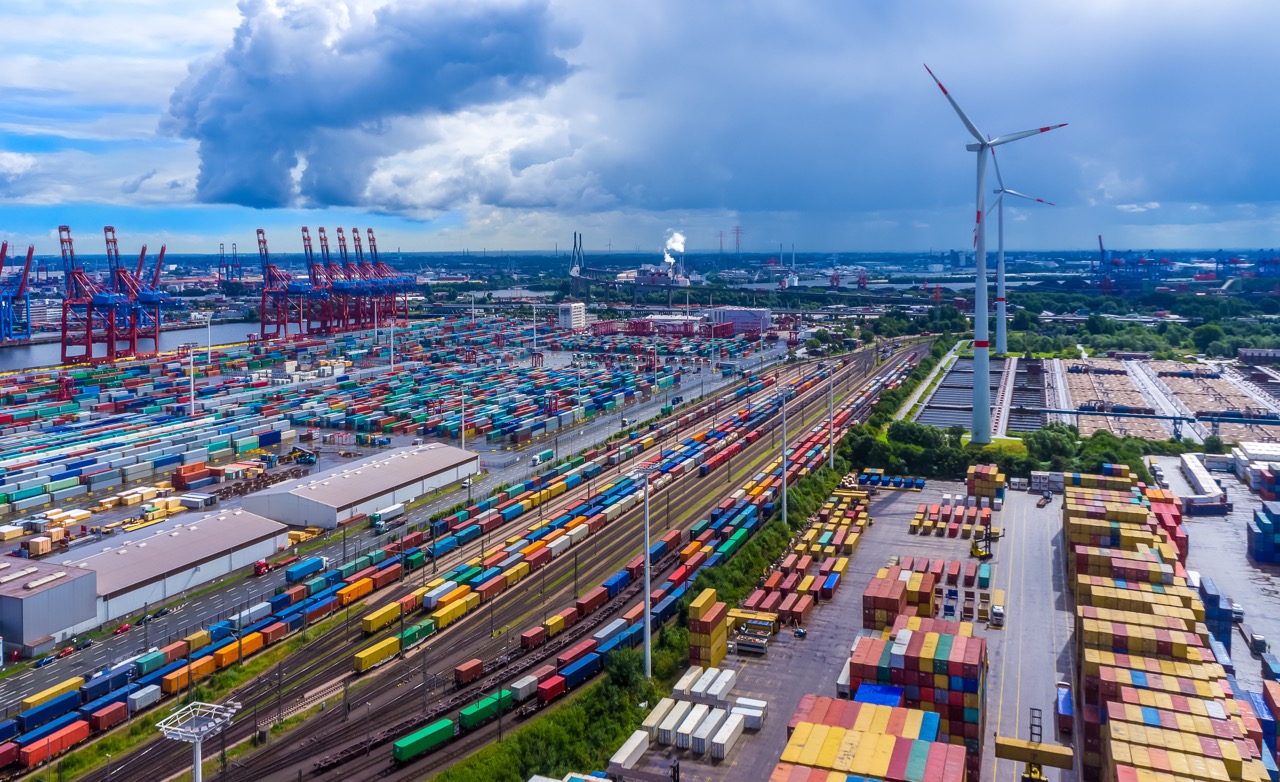The digital release process in the German seaports has reached the next level. During the pilot phase with shipping companies Hapag-Lloyd, MSC and CMA CGM as well as the logistics service provider Kühne+Nagel, the project was made ready for the market launch while also adding new modules. The nationwide solution is being jointly developed under the name German Ports by the IT service providers Dakosy AG in Hamburg, and dbh Logistics IT AG in Bremen.
The partners participating in the pilot phase are all motivated by a common interest. They want to implement a standardized, digitalized release process for containers imported into the German seaports of Hamburg, Bremerhaven, Bremen and Wilhelmshaven. Authorized officers Dirk Gladiator at DAKOSY and Holger Hübner at dbh summarize the feedback received during the test run: “The pilot participants enjoy the benefits of a high degree of automation, increased security and a digital release process that runs in real time.”
Pilot user Michael Schröder at Hapag-Lloyd explains the practical significance of the project: “The import release process has always involved a great deal of manual work for shipping companies and forwarders due to the exchange of e-mails and PDF documents. The German Ports platform is an important step towards digitalizing and streamlining the process, and we have been involved in its development from the very start. We strongly welcome the multi-site cooperation between DAKOSY and dbh, which ensures a uniform solution for the German seaports.”
Integration of alternate return depots
To reduce the numerous email exchanges in the existing process, DAKOSY and dbh are currently integrating new functions into German Ports. One of these is the option to select a different depot for the return of empty containers in the course of the release process. Fabian Gäbel from Kühne+Nagel describes this feature, which is very important for freight forwarders: “Even during the pilot phase, the option of executing releases while specifying an alternate return depot proved to be an indispensable component for our system integration. In order to further reduce unnecessary e-mail communications in the future, we very much welcome the fact that this latest step has been taken and that the empty container depot exchange function has been integrated into the German Ports platform. It’s another important step towards the continuous expansion of our digital ecosystem.” The new feature “alternate return depot” will be available through German Ports via an EDI interface as well as in the web application.
Inclusion of declaration of assignment
Another new function is the digital declaration of assignment. To clarify: the declaration of assignment enables the release by the authorized representative (consignee) named in the B/L to a third party. “Currently, this is transmitted by e-mail or by fax. Using German Ports, we can digitalize and standardize this process. With between 25 and 30 percent of these transactions involving a declaration of assignment, we see great potential for this function,” concludes Gladiator. Current feedback from the industry shows Gladiator and Hübner that the functional extensions ‘alternate return depot’ and ‘declaration of assignment’ are attracting a great deal of interest from freight forwarders.
Container and vessel information for multiple locations
In addition to the release process, DAKOSY and dbh will provide multi-site container and vessel information for the most important German North Sea ports. “Both functions are expected to be operational in the second half of this year,” Hübner predicts. The container information service will centrally display the current loading and delivery data as well as the most important status information about the progress of the corresponding customs processes. This means that it is no longer necessary to switch between different portals for each separate port of transhipment. In the Vessel Information module, current call and departure data can be retrieved centrally via a single platform for Bremerhaven, Hamburg and Wilhelmshaven.



